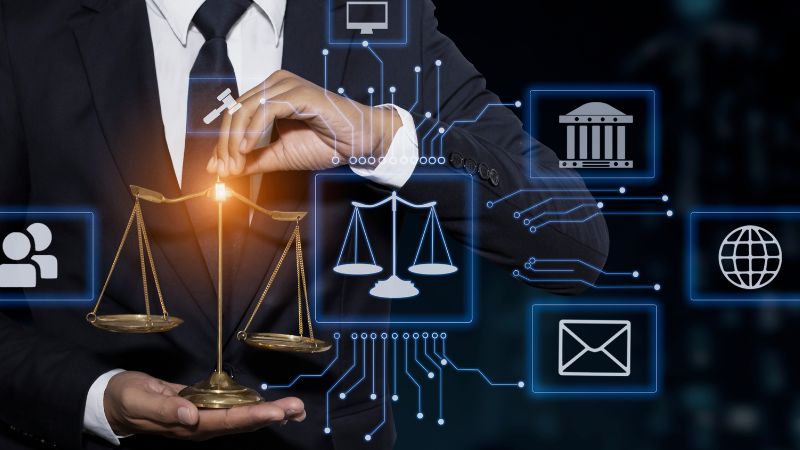How Digitization and AI Are Transforming Receivables Management
The ongoing digitization of the judiciary, the new version of the Electronic Writ-of-Payment Procedure (EPU), and AI-based tools represent the biggest shift in the debt collection industry in years. Mirosław Wnuk, Head of Debt Collection Development at VSoft SA, discusses the planned implementations and their impact on institutions managing receivables.
Why is it worth using AI for large-scale document processing?
Companies face a massive volume of documents requiring analysis every day. Traditional methods of manual data extraction not only consume valuable employee time but also generate high operational costs and increase the risk of errors. Advanced artificial intelligence systems such as VSoft AI Document Analyser are emerging as the solution to these challenges.
How AI Automates the Handling of Court-Enforcement Documents
AI-based solutions play a crucial role in automating processes that were previously carried out manually. One example is the VAIDA system for handling court-enforcement documents, presented by Agata Zapała, Business Solutions Architect at VSoft SA.
Divortium & VSoft SA – WAD.TB as a Key Step in the Digitalization of Legal Data Analysis
Divortium, a company specializing in legal services and asset-related proceedings, was seeking a way to streamline and automate the analysis of banking data in court cases. The previous approach—manually reviewing hundreds of pages of bank statements—was time-consuming, costly, and prone to error. This challenge was taken on by the team at VSoft SA.
AI in Debt Collection: How to Harness the Potential of Artificial Intelligence in the Debt Recovery Process
Artificial intelligence has become an integral part of our everyday lives. Increasingly, people are turning to ChatGPT instead of traditional search engines, asking AI for weekend trip plans or jacket recommendations for a mountain hike. But the real revolution is still on the horizon—especially in the financial sector and receivables management. With the AI Act coming into effect, companies must not only recognize the potential of these new technologies but also develop strategies for their safe and legally compliant implementation.
How Automation and AI Are Transforming the Receivables Management Industry
Automation, artificial intelligence, and advanced digital tools are transforming processes related to receivables management. What’s driving these innovations, and what benefits do they bring to the debt collection industry? Debt collection processes, whose main objective is the effective recovery of overdue receivables, are undergoing a profound technological transformation. Modern solutions support all key aspects of these processes—from client communication and decision-making to the collection and updating of debtor information. The implementation of advanced technologies and AI significantly accelerates execution, especially in the area of customer interaction, directly improving the effectiveness of debt recovery. Automating these actions can also help significantly reduce operational costs.
New VSoft Projects: Leveraging AI in Receivables Management
Generative AI, which is taking the business world by storm, is also opening new possibilities in the field of receivables management. AI-based systems can analyze vast amounts of data, automate many repetitive tasks, and even predict debtor behavior. In this article, we present two innovative projects undertaken by VSoft's team: "Using OpenAI to Recognize Court Letters" and "Analyzing Messages for Offensive and Prohibited Content."
Advantages of integrating VSoft KO Connector with the “Komornik Online” system
VSoft KO Connector is a response to the needs of financial institutions and bailiffs' offices that process large amounts of data related to enforcement proceedings. Integration of the Connector with the Komornik Online system enables efficient data management and automation of many processes.
VSoft Collection: Use in Traditional Court Proceedings
VSoft Collection has been designed to support users in conducting electronic court proceedings. The system also offers functions that greatly facilitate the handling of traditional processes: court and enforcement. Find out how process automation can streamline the daily work of those responsible for overseeing court proceedings.
How can technology support enforcement processes? Advantages of using VSoft KO Connector
Technology helps streamline and automate a lot of the tasks that, until recently, were performed manually by employees, increasing the efficiency of the organisation and reducing the amount of repetitive work. Technology may also support enforcement processes, considered to be lengthy and tedious, by reducing the amount of manual work and allowing staff to fully focus on ensuring that these processes are highly efficient.
Technological trends in debt collection
Change is a hallmark of our times. Although it might seem that we are accustomed to dynamically changing conditions and have the ability to adapt quickly, modern realities force organisations to be even more flexible. This trend is particularly evident in the debt collection industry, which is evolving strongly, making the technological perspective in this sector increasingly interesting. Automating debt collection processes nowadays is the order of the day, which translates into the quality of customer service and its improvement. Automation and robotisation, communication, digitization of courts, AI, scoring or data analytics ensure not only faster decision-making, but also the selection of an individual strategy tailored to a particular client.
The influence of technology on the quality of customer service in field debt collection
Nowadays, specialised IT systems prove to be an invaluable aid in almost every industry. It is no different when it comes to carrying out the duties of a field debt collector. Debt collection companies frequently face the question of how to streamline the management processes in their company. At the same time, they are looking for solutions that will not generate huge costs but will effectively improve the quality of work. In this article, we outline the responsibilities of a debt collector, as well as the benefits of choosing to use our application at work.
VSoft e-Court Collection – how about automating the communication of the debt collection system with the e-court?
Does your debt collection system generate a lot of lawsuits for payment every month? What about filing them en masse, without having to print them out, attach evidence documents, pack everything in envelopes and send it all over the country? It would be so much easier to file all lawsuits with one court! Finally, and perhaps most importantly – what if there was the possibility of paying a 4 times smaller court fee for a lawsuit? There is a way to do all this! We are talking about Electronic Writ of Payment Proceedings (EPU) conducted on a mass scale by the e-Court based in Lublin. To take advantage of the above advantages of EPU, all you need to do is file electronic lawsuits manually, directly on the e-Court...
Electrifying digitisation of debt collection
The automation of debt collection processes is entering a new level, thanks to the rapidly increasing digitalisation of the services provided by debt collection companies, as well as greater access to data on public services. It is the latter that we will take a closer look at in order to show the extent of change in recent years and estimate the real impact on business process optimisation.
When the situation changes dynamically, we react agilely. About cooperation with one of the largest banks in Poland during the pandemic
The previous year was in many respects a breakthrough for banks and technology providers operating in the financial industry. The functioning of the former largely depends on factors such as the possibility of direct contact with customers, a stable economic situation or applicable law. With the advent of the pandemic, there was a need to immediately adjust existing banking processes and systems. New regulations and restrictions resulting from the lockdown appeared overnight, stationary service was reduced to a minimum, the possibilities and needs of consumers, whose financial situation in many cases became less predictable, changed. The consequence of all this was the remodeling of the customer service method and the transfer of most of the services offered to the online channel. Many years of cooperation with clients allow...
Choosing a debt collection system – a universal product or a tailor-made one?
The purpose of this article is to introduce the process of choosing a new debt collection system and show what necessary steps should be taken to make the task easier, find a partner who will support us in achieving our goal and ensure success by implementing the best debt collection system. Supplier to build a partner relationship that is helpful at the project implementation stage.















